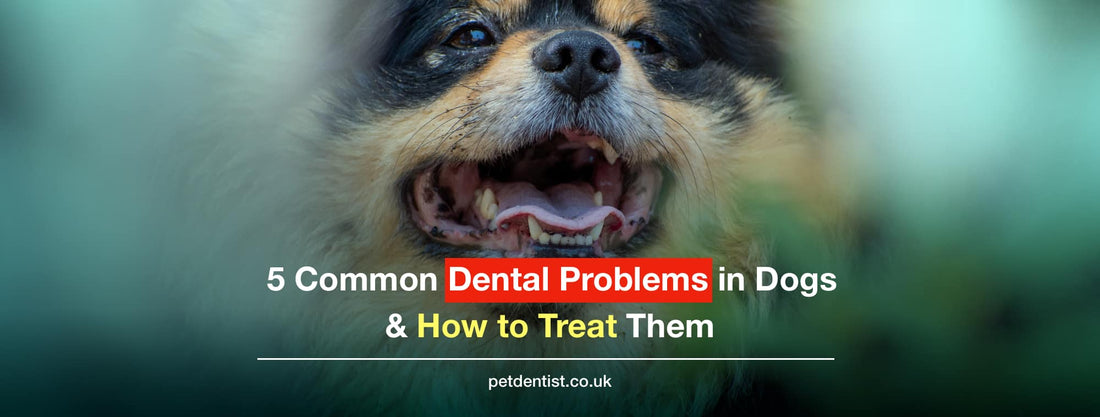
5 Common Dental Problems in Dogs and How to Treat Them
Share
Ignoring your pup’s pearly whites can lead to serious issues, from tooth loss to infections that affect major organs. But the good news? Most dental problems are preventable or treatable with the right care.
Here are the top 5 most common dental problems in dogs and what you can do to help your furry friend smile pain-free!
1. Periodontal Disease (Gum Disease):
Periodontal disease is the #1 dental issue in dogs, affecting over 80% by the age of 3. It starts as plaque, which hardens into tartar and leads to inflammation of the gums.
Signs to watch for:
- Bad breath (worse than usual)
- Red or bleeding gums
- Yellow or brown tartar buildup
- Difficulty chewing or eating
How to treat:
- Professional dental cleaning under anesthesia
- Regular at-home brushing with dog-safe toothpaste
- Dental chews and water additives
Pro tip: Start brushing early in life—even puppies benefit!

2. Tooth Fractures:
Dogs love to chew, but that tough bone or rock might cause a painful tooth fracture. Exposed nerves can make eating painful and lead to infection.
Signs to watch for:
- Avoiding tough bone
- Drooling
- Swelling in the face
- Reluctance to eat
How to treat:
- See a veterinary dentist. Some fractures require root canals or extractions.
- Avoid hard bones; opt for safer chew toys instead.

3. Retained Baby Teeth
Some dogs, especially small breeds, don’t lose their baby teeth on schedule. This creates overcrowding and traps food and bacteria.
Signs to watch for:
- Double row of teeth (puppy and adult teeth visible)
- Bad breath
- Red, irritated gums
How to treat:
- Veterinary removal is often necessary if baby teeth haven’t fallen out by six months.
- Regular vet visits help catch this early.

4. Tooth Root Abscess
This is an infection at the root of a tooth, usually caused by untreated periodontal disease or a fractured tooth.
Signs to watch for:
- Swelling around the face or eye
- Painful chewing
- Pus or drainage
- Bad odor from the mouth
How to treat:
- A vet must drain the abscess and typically remove the affected tooth.
- Antibiotics are often prescribed.
This is a painful emergency, so prompt treatment is essential.

5. Plaque and Tartar Buildup
Plaque is the sticky film of bacteria that hardens into tartar. Left alone, it leads to gum disease and decay.
Signs to watch for:
- Yellow or brown deposits on teeth
- Bad breath
- Mild gum irritation
How to treat:
- Daily brushing with dog toothpaste
- Dental diets or treats approved by the VOHC (Veterinary Oral Health Council)
- Regular dental cleanings at your vet
Prevention is Pawsible!
Dental health might not be the most glamorous part of pet parenting, but it’s one of the most important. Regular brushing, dental check-ups, and choosing the right chew toys can go a long way in keeping your dog’s smile healthy.
Remember: A clean mouth leads to a happy tail!
Quick Tips for Dog Dental Health:
- Brush teeth at least 2–3 times per week
- Use only pet-safe toothpaste
- Schedule annual vet dental checkups
- Offer safe dental chews or toys
- Monitor for any changes in eating, breath, or gum color
